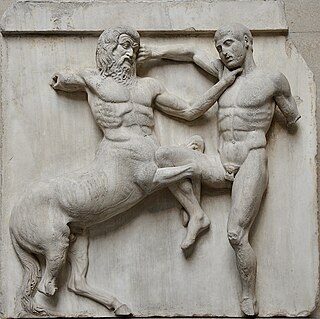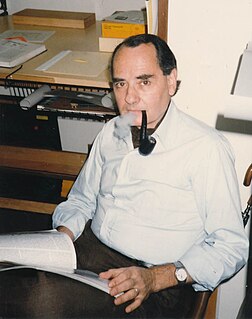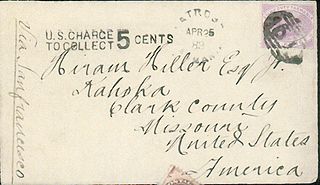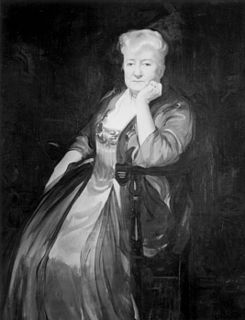
Ban Chiang is an archaeological site in Nong Han District, Udon Thani Province, Thailand. It has been a UNESCO World Heritage Site since 1992. Discovered in 1966, the site attracted interest due to its ancient, red pottery. Beginning in 2003, it gained international attention when the United States Department of Justice prosecuted smugglers and museums for trafficking in Ban Chiang antiquities.

The University of Pennsylvania Museum of Archaeology and Anthropology—commonly called the Penn Museum—is an archaeology and anthropology museum that is part of the University of Pennsylvania. It is located on Penn's campus in the University City neighborhood of Philadelphia, at the intersection of 33rd and South Streets.

Antiquities are objects from antiquity, especially the civilizations of the Mediterranean: the Classical antiquity of Greece and Rome, Ancient Egypt and the other Ancient Near Eastern cultures. Artifacts from earlier periods such as the Mesolithic, and other civilizations from Asia and elsewhere may also be covered by the term. The phenomenon of giving a high value to ancient artifacts is found in other cultures, notably China, where Chinese ritual bronzes, three to two thousand years old, have been avidly collected and imitated for centuries, and the Pre-Columbian cultures of Mesoamerica, where in particular the artifacts of the earliest Olmec civilization are found reburied in significant sites of later cultures up to the Spanish Conquest.
Archaeological ethics refers to the moral issues raised through the study of the material past. It is a branch of the philosophy of archaeology. This article will touch on human remains, the preservation and laws protecting remains and cultural items, issues around the globe, as well as preservation and ethnoarchaeology.

A museum is distinguished by a collection of often unique objects that forms the core of its activities for exhibitions, education, research, etc. This differentiates it from an archive or library, where the contents may be more paper-based, replaceable and less exhibition oriented, or a private collection of art formed by an individual, family or institution that may grant no public access. A museum normally has a collecting policy for new acquisitions, so only objects in certain categories and of a certain quality are accepted into the collection. The process by which an object is formally included in the collection is called accessioning and each object is given a unique accession number.

Repatriation is the return of art or cultural heritage, often referring to ancient or looted art, to their country of origin or former owners. The disputed cultural property items are physical artifacts of a group or society that were taken from another group usually in an act of looting, whether in the context of imperialism, colonialism or war. The contested objects vary widely and include sculptures, paintings, monuments, objects such as tools or weapons for purposes of anthropological study, and human remains.
American Council for Cultural Policy (ACCP) was a not-for-profit organization formed in 2002 by a group of politically influential antiquities dealers, collectors and lawyers in the United States, with its headquarters in New York and representatives in Washington D.C.. The goal of the organization was described by Ashton Hawkins as "informing the public on arts issues." The organization is now defunct and its website (culturalpolicycouncil.org) has been removed from the web. Some of its members now actively take part in Cultural Policy Research Institute.

Hagop Kevorkian was an Armenian-American archeologist, connoisseur of art, and collector, originally from Kayseri, who graduated from the American Robert College in Istanbul, settled in New York City in the late 19th century, and helped America acquire a taste for Eastern artifacts.
George Fletcher Bass was an American archaeologist. An early practitioner of underwater archaeology, he co-directed the first expedition to entirely excavate an ancient shipwreck at Cape Gelidonya in 1960 and founded the Institute of Nautical Archaeology in 1972.

Oscar White Muscarella is an American archaeologist and former Senior Research Fellow at the Metropolitan Museum of Art, where he worked for over 40 years before retiring in 2009. He specializes in the art and archaeology of the Ancient Near East, in particular Ancient Persia and Anatolia. Muscarella is an untiring opponent of the Looting of ancient sites and has earned a reputation as the conscience of the discipline. He received his Ph.D. from the University of Pennsylvania in 1965.
The antiquities trade is the exchange of antiquities and archaeological artifacts from around the world. This trade may be illicit or completely legal. The legal antiquities trade abides by national regulations, allowing for extraction of artifacts for scientific study whilst maintaining archaeological and anthropological context. The illicit antiquities trade involves non-scientific extraction that ignores the archaeological and anthropological context from the artifacts.
What in the World? is a 1951 to 1955 television quiz show hosted by Dr. Froelich Rainey in which the scholar-contestants tried to identify artifacts. The objects were primarily archaeological in nature, but also consisted of fossils, ethnographic items and more. It premiered on October 7, 1951 on CBS. The first, and one of the most successful shows of its type, it confounded critics by running for 15 years and influenced successors such as the BBC's Animal, Vegetable, Mineral? and others. The music of the opening and closing were taken from Ottorino Respighi's "Fountains of Rome" featuring the dissonant beginning of the Fontana de Tritone section. The music accompanying the beginning of each segment, with the artifact to be discussed emerging mysteriously from a cloud of smoke, was taken from a variety of sources, usually 20th century compositions such as Stravinsky's "The Rite of Spring" or Debussy's "Syrinx".
Froelich Gladstone Rainey was an American anthropologist and Director of the University of Pennsylvania Museum of Anthropology and Archaeology from 1947 to 1977. Under his leadership, the Penn Museum announced the Pennsylvania Declaration, ending the purchase system of acquiring antiquities and artifacts that had, in practice, encouraged looting from historical sites. In the early 1950s Rainey also devised and hosted the popular "What in the World?" television gameshow, which highlighted the museum's collections and involved notable scholars and celebrities of the day. In 1975, in recognition of his role at the University of Alaska Fairbanks, where he had served as the university's first professor of anthropology from 1935 to 1942, Rainey's Cabin on the campus was listed on the National Register of Historic Places.

Hiram Milliken Hiller Jr., was an American physician, medical missionary, explorer, and ethnographer. He traveled in Oceania and in South, Southeast, and East Asia, returning with archeological, cultural, zoological, and botanical specimens and data for museums, lectures and publications. His notes and collections provide valuable information about those regions and their people from the late 19th century. In later life, he was involved in the study of polio during the epidemics that hit the United States in the early 20th century.

UNIDROIT Convention on Stolen or Illegally Exported Cultural Objects is the international treaty on the subject of cultural property protection. It attempts to strengthen the main weaknesses of the 1970 UNESCO Convention on the Means of Prohibiting and Preventing the Illicit Import, Export and Transfer of Ownership of Cultural Property. The UNIDROIT Convention seeks to fight the illicit trafficking of cultural property by modifying the buyer's behaviour, obliging him/her to check the legitimacy of their purchase.
George Byron Gordon (1870–1927) was a Canadian-American archaeologist, who graduated from Harvard University in 1894. While studying at Harvard, he participated in excavations at Copan in Honduras under the direction of John G. Owens in 1891. Following Owens’ death in the field, Gordon took command of the Copan expeditions from 1894 to 1895 and in 1900–1901. After his time in Honduras, George Byron Gordon was hired by the University of Pennsylvania where he led two expeditions to Alaska in 1905 and 1907. He spent the remainder of his twenty-four year employment at the University of Pennsylvania collecting antiquities for the University of Pennsylvania Museum of Archaeology and Anthropology’s North American collections, and he remains one of the museum’s largest contributors of North American artifacts.

Collections management involves the development, storage, and preservation of collections and cultural heritage. The primary goal of collections management is to meet the needs of the individual collector or collecting institution's mission statement, while also ensuring the long-term safety and sustainability of the cultural objects within the collector's care. Collections management, which consists primarily of the administrative responsibilities associated with collection development, is closely related to collections care, which is the physical preservation of cultural heritage. The professions most influenced by collections management include collection managers, registrars, and archivists.
The Cultural Heritage Center of the American Bureau of Educational and Cultural Affairs specializes in the protection and preservation of the world's ancient and historic monuments and archeological sites.
"Found in collection" (FIC) is a term used by a museum to refer to "undocumented objects that remain without status after all attempts to reconcile them to existing records of permanent collection and loan objects are completed". Despite the best efforts of museum staff, museums often have FIC items. This term was developed so that collections with incomplete provenance would be handled ethically and with transparency. Depending on the paperwork and information accompanying the material, the museum has several choices in how to proceed.

Sara Yorke Stevenson was an American archaeologist specializing in Egyptology, one of the founders of the University of Pennsylvania Museum of Archaeology and Anthropology, suffragist and women's rights activist, and a columnist for the Philadelphia Public Ledger.











